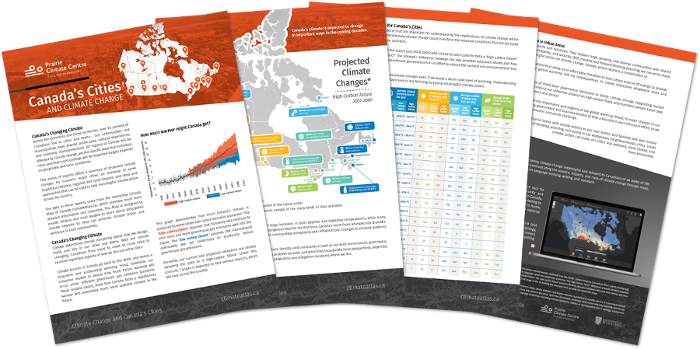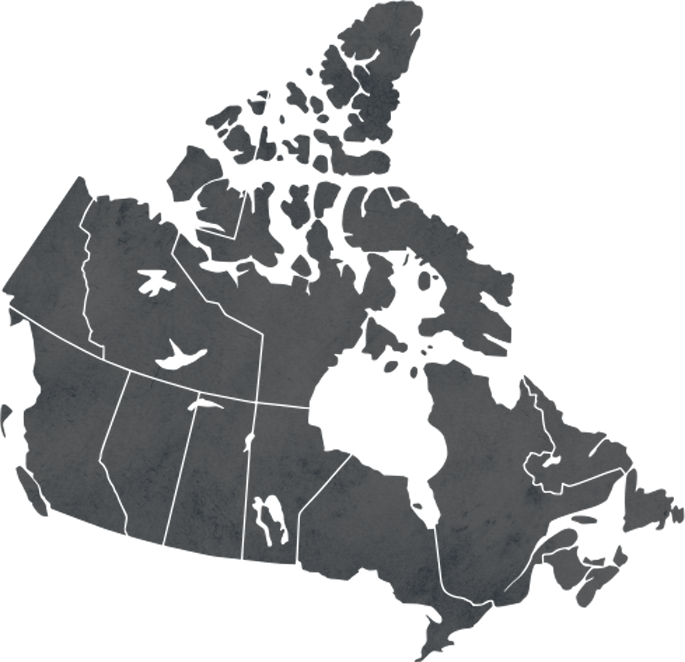Cities
The climate determines almost everything about how we design, build, and live in our cities. Now, with our climate changing, we need to re-think important aspects of how we live our urban lives.
The climate determines almost everything about how we design, build, and live in our cities. Now, with our climate changing, we need to re-think important aspects of how we live our urban lives.
The dense concentration of people, government, business, infrastructure, and economic resources in urban areas makes them uniquely vulnerable to the growing risks of a warming world.
This same density also makes cities a powerful source of resilience and resourcefulness when it comes to taking action on climate change.
Rising to the climate change challenge can be an opportunity to improve the health, safety, and quality of urban life.
Read "Canadian Cities and Climate" to learn about how cities across Canada are affected by and are responding to climate change.
Four out of five people in Canada live in urban areas, which means the vast majority of Canadians face the growing risks that climate change is bringing to our cities and towns.
In this series of city reports, we offer a summary of projected climate changes for Canada’s major cities, an overview of some important national, regional and local impacts, and ideas and approaches that can be used today to take meaningful climate action across the country.
Cities are a powerful source of resilience and resourcefulness when it comes to taking action on climate change. Learn more about what climate change means where you live.


Recent floods, ice storms and heat waves have taught the City of Toronto important lessons about taking action on climate change.
Politicians and planners have committed to funding bike paths and public transit, developing new technologies to save energy and cool the downtown, and increasing public awareness about climate change.
In 2009, Vancouver Mayor Gregor Robertson’s team released the “Greenest City Action Plan,” a commitment to make Vancouver the "greenest city in the world" by 2020.
Innovative planning decisions in pursuit of this ambitious goal have lowered Vancouver's carbon footprint, making it the city with the lowest carbon emissions per capita in the world.
This ambitious collective effort offers an exciting glimpse at how cities can combine vibrant growth and prosperity with meaningful climate action.
Planners, landscape architects, and other allied professionals play a pivotal role in preparing communities and environments for the lived realities of climate change.
Their forward-thinking approach, commitment to sustainability, and widespread influence put them in an ideal position to address climate risk and build climate resilience.
Explore how the planning professions are taking action on climate change and check out a brand-new guidebook that helps explain how to best make use of the Climate Atlas to understand what climate change means for communities across the country.
Most Canadians aren’t used to worrying about dangerously hot temperatures, but heat waves are becoming increasingly common, and climate change means that heat risks will get worse.
These effects will be especially severe in our cities and towns, because they tend to be much warmer than the surrounding countryside. This is called the “urban heat island effect."
Cities across Canada are working on strategies to deal with increased heat, including creating warning systems and networks of cooling centres that can help the most vulnerable citizens. Making changes to how we build our cities can also help turn down the heat.
Read “The Urban Heat Island Effect” to learn more about urban heat risks and what cities can do about them.
Near the end of the century, the City of Toronto could experience nearly two months of +30 °C days a year, according to climate projections. To address the growing risk of future heat waves, local faith leaders have created a network of cooling centres in churches, mosques, temples and synagogues, and are mobilizing their congregations to provide support for susceptible populations. For City Counsellor Gord Perks, this example of grassroots community resilience makes him hopeful about the future.
City planners and urban citizens need tools and information about the likely impacts of climate change as well as what kinds of adaptation and mitigation measures are possible and practical at the local level.
In the series of research papers Building a Climate-Resilient City, the Prairie Climate Centre outlines steps that cities can take to engage in climate risk management in a range of areas, including transportation, agriculture, electricity infrastructure, economics, and disaster preparedness.
The Climate Atlas allow you to explore how climate change is likely to impact Canada’s urban centres.
See our “Climate Maps for Cities” page for an introduction to some key Atlas maps that provide especially important information for city life and urban policy in Canada.